Your basket is currently empty!
Your complete guide to Cooking Lentils! Learn how to cook any color—brown, green, black, French, or red—perfectly every time, so you can enjoy these delicious, nutritious powerhouses in recipes, salads, bowls, and more.
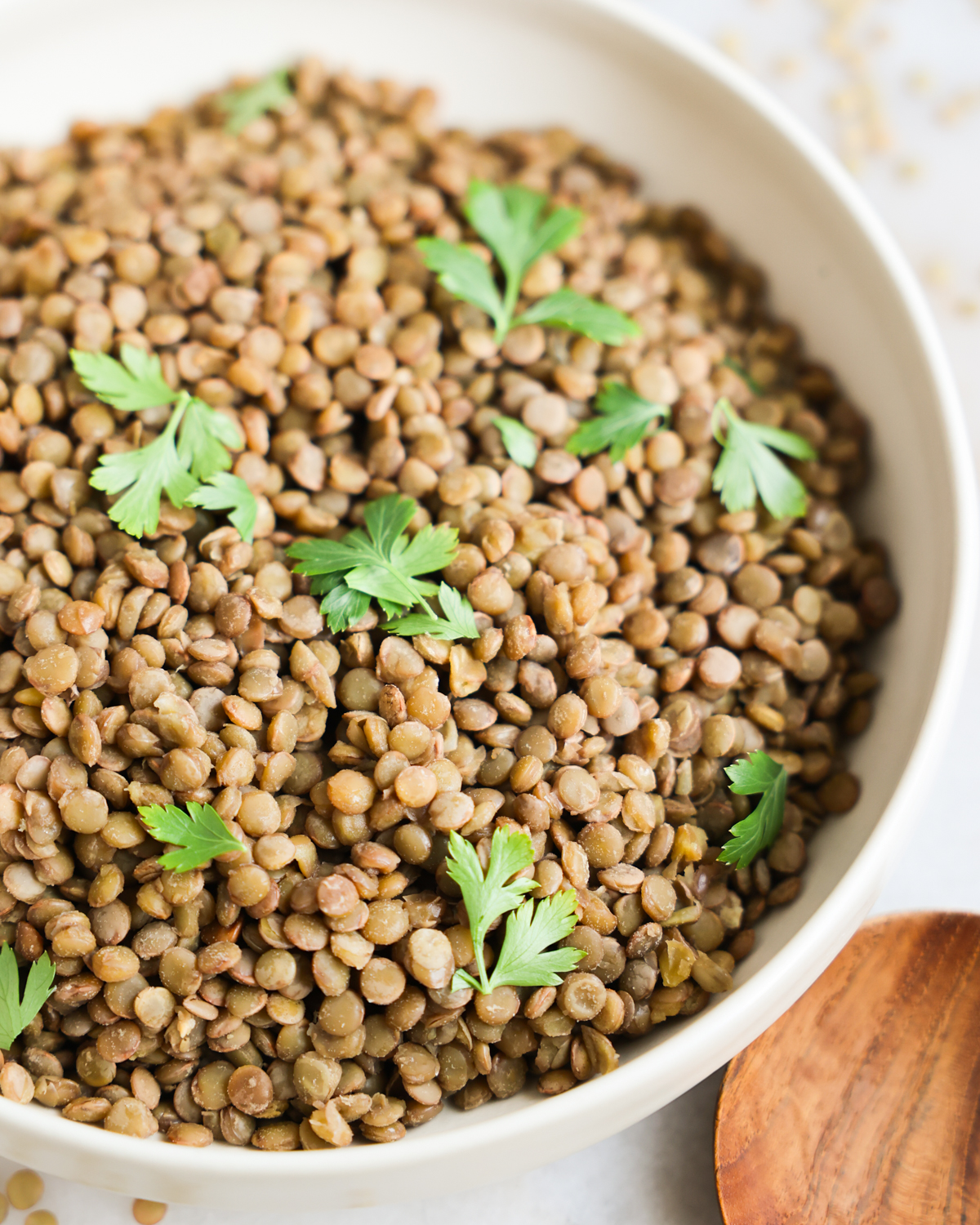
If I were to make a list of my top 10 most versatile and budget-friendly vegan ingredients, lentils would be near the top. They’re delicious, easy to cook, pair well with so many flavors, and are wholesome and nutritious.
Honestly, I’m not sure where I’d be without them. I discovered lentils soon after becoming vegan (they’re such a great source of protein!) and we’ve been close pals ever since. These days, I use them in everything from tacos and meatloaf to bowls and salads.
Over the years, I’ve learned all the ins and outs of cooking with lentils—like the idea cooking times and best uses for each variety. So, if you’ve ever wondered “How do you cook lentils?” you’re in the right place! Keep reading to learn all about lentils, get specific cooking times and preparation methods, and try some of my favorite, easy lentil recipes.
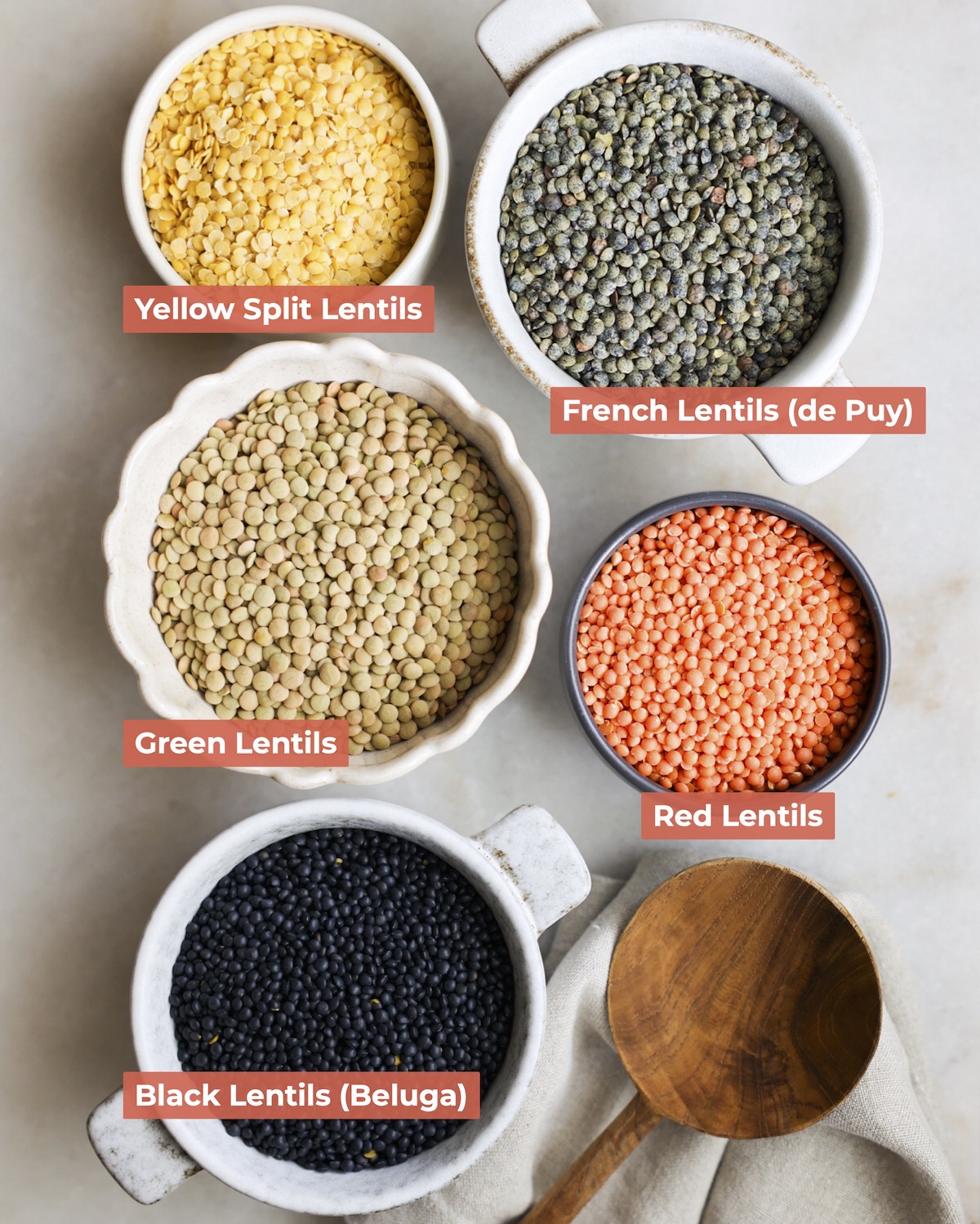

All About Lentils
Lentils are small, lens-shaped members of the legume family. Though technically seeds, they have a hearty texture and a neutral-bean-like flavor. Cultivated for thousands of years across many cultures, lentils are regarded for their impressive nutritional benefits. They are high in fiber, plant-based protein, B vitamins, and a host of other essential micronutrients (source).
There are many varieties of lentils—black, French (Puy), brown, green, yellow, and red—each with its own unique texture and slightly different cooking time. In this post, I’ll walk you through the cooking times and best uses for each type. Let’s dive in!
Using Lentils in Recipes
Because of their different consistencies, each type of lentil shines in different kinds of recipes:
- Black Lentils—In particular, beluga and caviar, hold their shape the best, and are amazing for salads, bowls, and wraps.
- French Lentils— Although slightly less firm than black lentils, these are also firm enough to be used in bowls, salads, and other preparations calling for a lentil that holds its shape.
- Green and Brown—Are softer and slightly mushier (though not as much as red lentils), making them perfect for meatball and meatloaf recipes. When needed, they can be used in place of firmer black and French lentils; just be sure to avoid overcooking them.
- Red Lentils—Because these are so soft, mushy, and soupy, they are most suitable for soup and curry recipes, such as my Red Lentil Carrot Soup or Red Lentil Sweet Potato Curry. I generally do not recommend cooking them with this method unless using them to make a dip or hummus.
Wondering how to make lentils in the pressure cooker? Check out my Instant Pot Lentils recipe!
Ingredients
Lentils: You’ll need 1 cup of your preferred variety. Sort through them to remove any debris, then rinse well in a fine-mesh strainer.
Water or Vegetable Stock: Use filtered water for a clean, neutral flavor, or opt for vegetable stock or broth (homemade or store-bought) for savory, vegetal undertones.
Salt: Seasons the lentils, enhancing their flavor.
How to Cook Lentils on the Stove
Cooking lentils is as easy as 1-2-3-4! If you can boil water, you can make them. Here’s how:
- Sort and Rinse the Lentils. Remove any debris, such as small pebbles, shriveled lentils, or bits of plant material. Rinse them in a fine-mesh strainer under cool water.


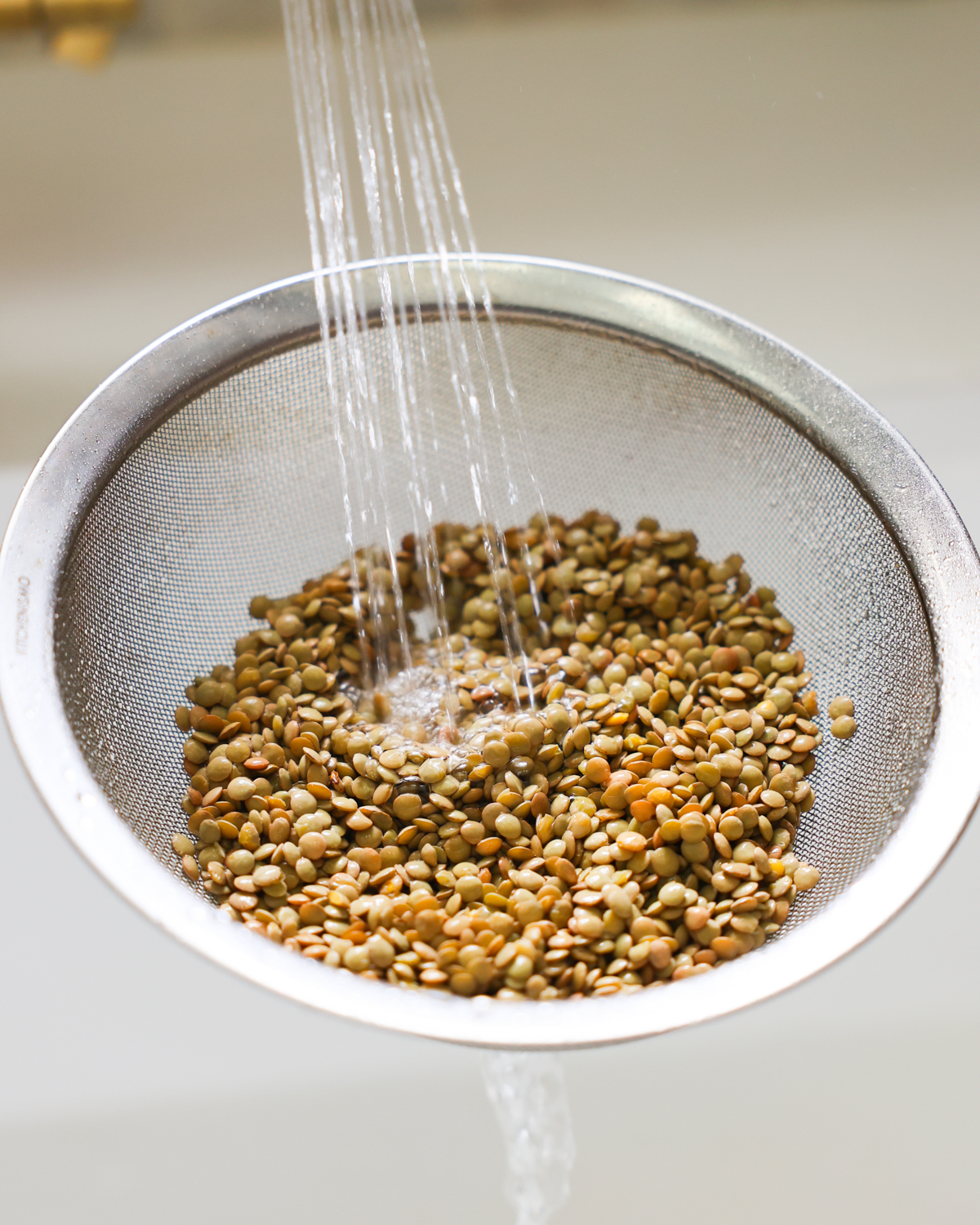

- Cook Lentils. Add the lentils, water, and salt to a pot and bring to a boil. Reduce the heat to medium-low, and simmer with the lid slightly ajar for about 30 minutes, or until the lentils are tender and reach your preferred texture. Black and French lentils may need about 5 extra minutes of cooking time; they should be tender but still hold their shape. Add a little more water (1/4 cup) if needed.
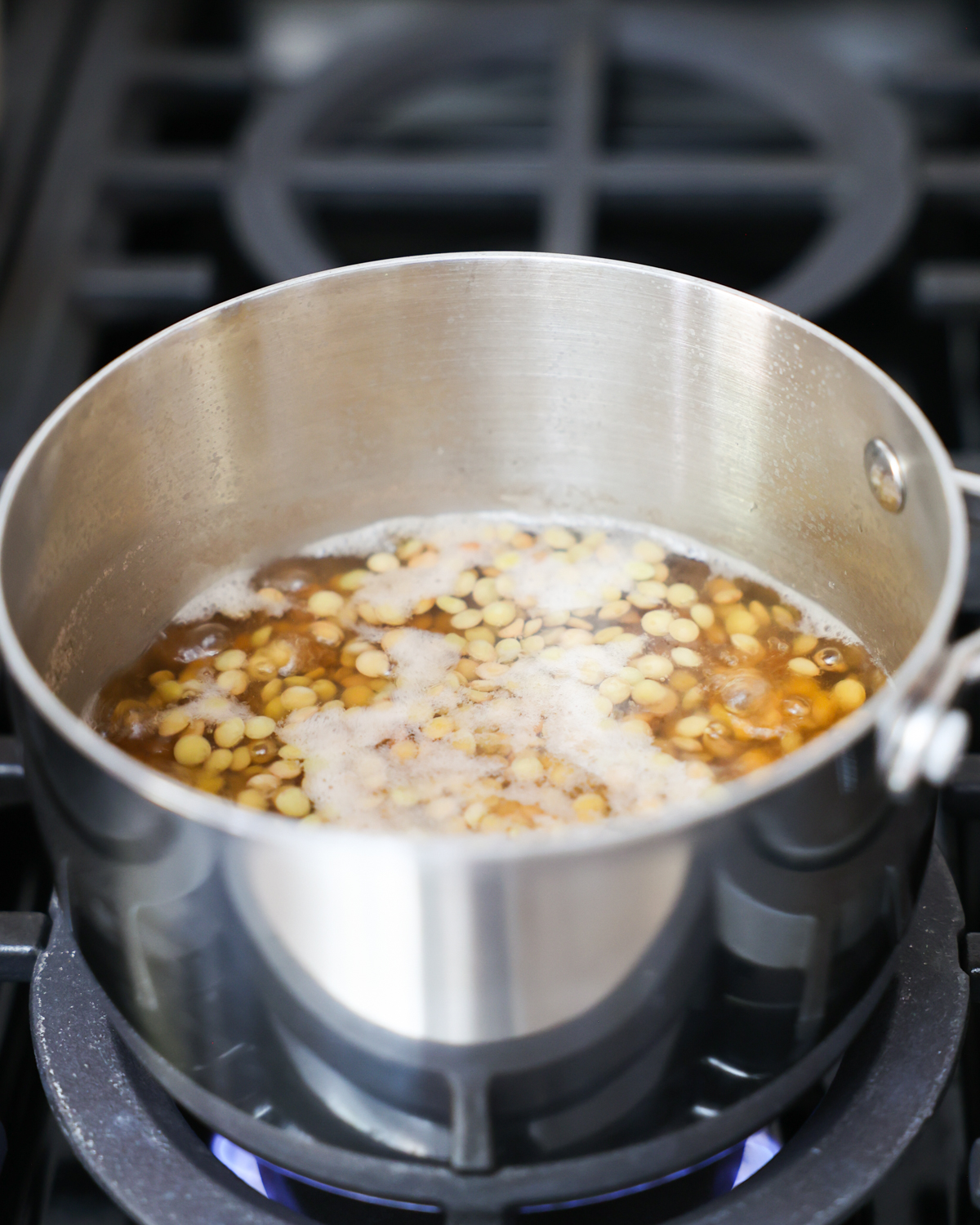

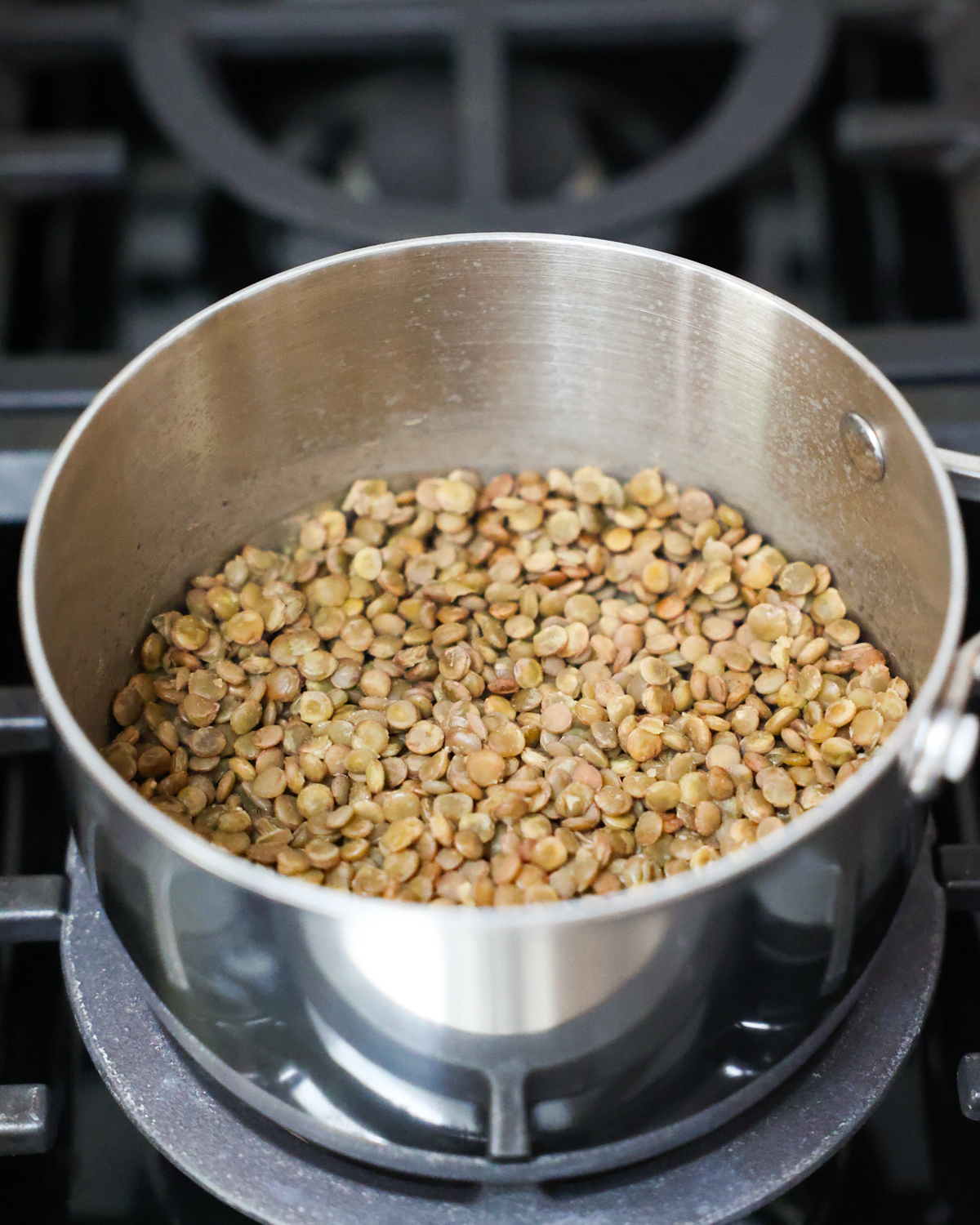

- Season and Enjoy. Season the lentils with salt to taste, and serve as a side dish or incorporate them into recipes.


Jenné’s Recipe Tips
- Adjust the Cooking Time: Keep an eye on the lentils as they cook, adjusting the time as needed by referring to the chart below. Overcooking lentils can cause even firmer lentil types to turn mushy.
- Salt Optional: If you’re using these lentils for a recipe, avoid salting them when cooking, unless your recipe states otherwise.
- Skim Off the Foam: Like beans, lentils can release a foam during the first few minutes of cooking. Skim it off for a cleaner flavor.
- Simmer: A rolling boil can break down the lentils, making them mushy. For the best texture, cook on a gentle simmer with the lid ajar.
- Plan for Volume: One cup of raw lentils yields about 3 cups cooked.


Lentil Cooking Times
The no-soaking rule and 1:2 ratio of lentils to liquid apply to all lentil types, though the specific cooking times differ:
| Lentil Type | Cooking Time | Notes |
| Green and Brown | 30 Minutes | Until tender and soft |
| Black and French | 30-35 Minutes | Until tender, yet still hold their shape |
| Red | 15-20 Minutes | Until soft, creamy, and easily mashed or broken down |
Recipe Variations
Adapt the lentils to your needs, making them a perfect base for all kinds of lentil recipes:
- Aromatics: Sauté a few minced garlic cloves or a shallot in a tablespoon of olive oil before adding the liquids for extra depth and flavor.
- Herbs: Simmer the lentils with a sprig of fresh rosemary or thyme or a 1/2 teaspoon of your favorite dried herbs for an herbaceous twist.
- Finishing: Once cooked, season the lentils with flaky sea salt, a splash of balsamic or red wine vinegar, nutritional yeast, cracked black pepper, or a drizzle of flavored olive oil for a simple yet delicious side dish.


How to Use Cooked Lentils
Here are some easy lentil recipes you can make with the cooked lentils.
Storage Directions
- Refrigerating: Store cooled lentils in an airtight container in the refrigerator for up to 5 days.
- Freezing: For longer storage, transfer cooled lentils to a freezer-safe container and freeze for up to 3 months. Defrost the lentils in the fridge overnight or in the microwave on gentle heat.
Frequently Asked Questions
Cooking times vary depending on the type of lentil: simmer green and brown lentils for about 30 minutes until tender, black or French lentils until they are tender but still hold their shape, and red lentils for 15–20 minutes until soft, creamy, and easily mashed.
Certainly—multiply the ingredients by your desired amount and follow the recipe directions as written, adjusting the pot size to accommodate the larger volume.
More Cooking Basics Recipes
Prevent your screen from going dark
-
Sort the lentils, removing any debris such as small pebbles, shriveled lentils, or bits of plant material. Rinse them in a fine-mesh strainer under cool water.
-
Add the lentils, water, and salt to a pot and bring to a boil. Reduce the heat to medium-low, and simmer with the lid slightly ajar for about 30 minutes, or until the lentils are tender and reach your preferred texture. Black and French lentils may need about 5 extra minutes of cooking time; they should be tender but still hold their shape. Add a little more water (1/4 cup) if needed.
-
Season with salt to taste, and serve as a side dish or incorporate into recipes.
- Refrigerating: Store cooled lentils in an airtight container in the refrigerator for up to 5 days.
- Freezing: For longer storage, transfer cooled lentils to a freezer-safe container and freeze for up to 3 months. Defrost the lentils in the fridge overnight or in the microwave on gentle heat.
Recipe Pro-Tips:
- Adjust the Cooking Time: Keep an eye on the lentils as they cook, adjusting the time as needed by referring to the chart on the corresponding blog post. Overcooking lentils can cause even firmer lentil types to turn mushy.
- Cooking Red lentils: Although red lentils can be cooked in this manner for only 15-20 minutes, they are much more tender and often get mushier when cooked, making them more suitable for soup and curry recipes, such as my Red Lentil Carrot Soup or Red Lentil Sweet Potato Curry.
- Skim Off the Foam: Like beans, lentils can release a foam during the first few minutes of cooking. Skim it off for a cleaner flavor.
- Simmer: A rolling boil can break down the lentils, making them mushy. For the best texture, cook on a gentle simmer with the lid ajar.
- Plan for Volume: One cup of raw lentils yields about 3 cups cooked.
- Salt Optional: If you’re using these lentils for a recipe, avoid salting them when cooking, unless your recipe states otherwise.
Calories: 169kcal | Carbohydrates: 29g | Protein: 12g | Fat: 1g | Saturated Fat: 0.1g | Polyunsaturated Fat: 0.2g | Monounsaturated Fat: 0.1g | Sodium: 299mg | Potassium: 458mg | Fiber: 15g | Sugar: 1g | Vitamin A: 19IU | Vitamin C: 2mg | Calcium: 31mg | Iron: 4mg

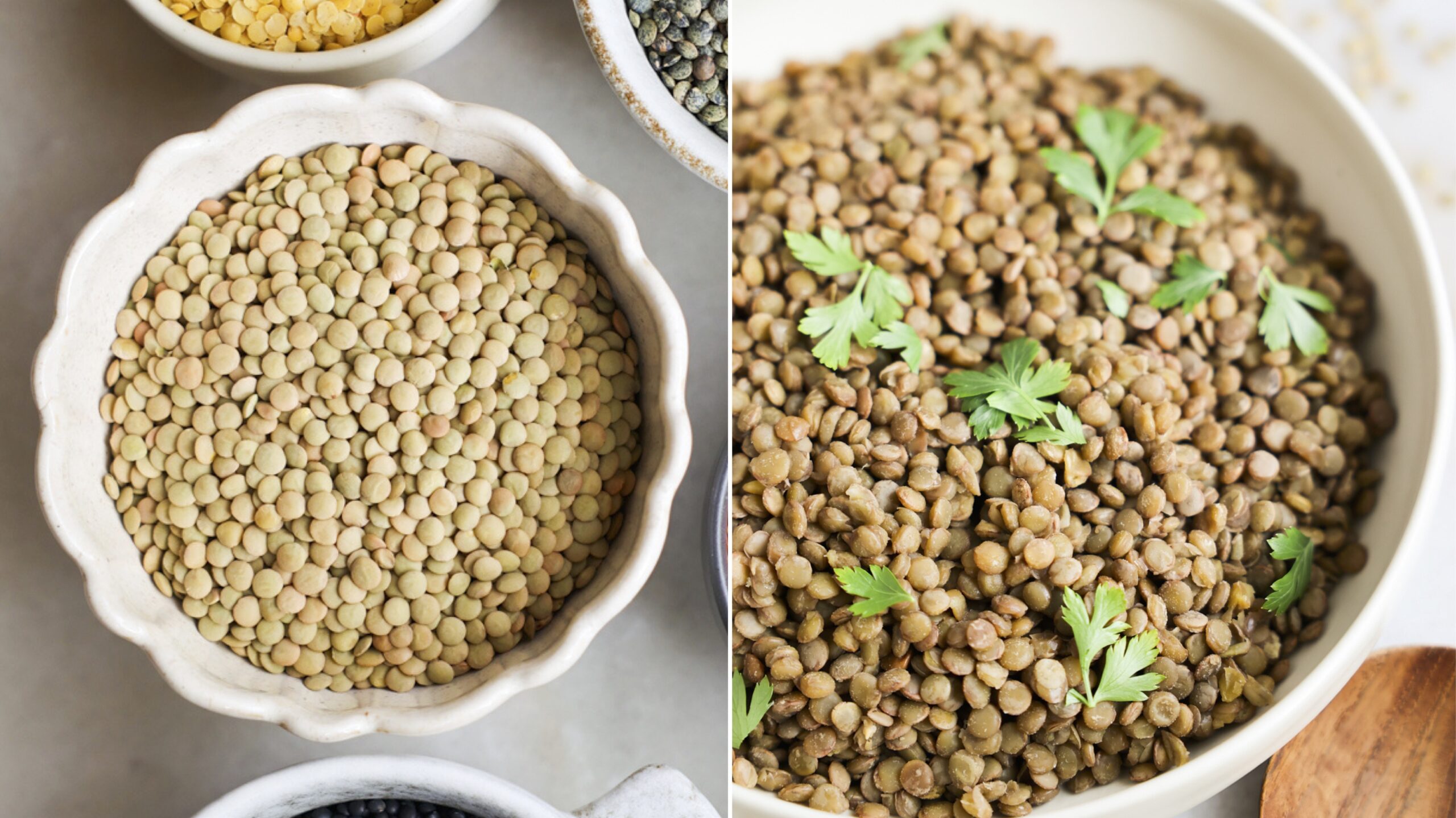
Leave a Reply